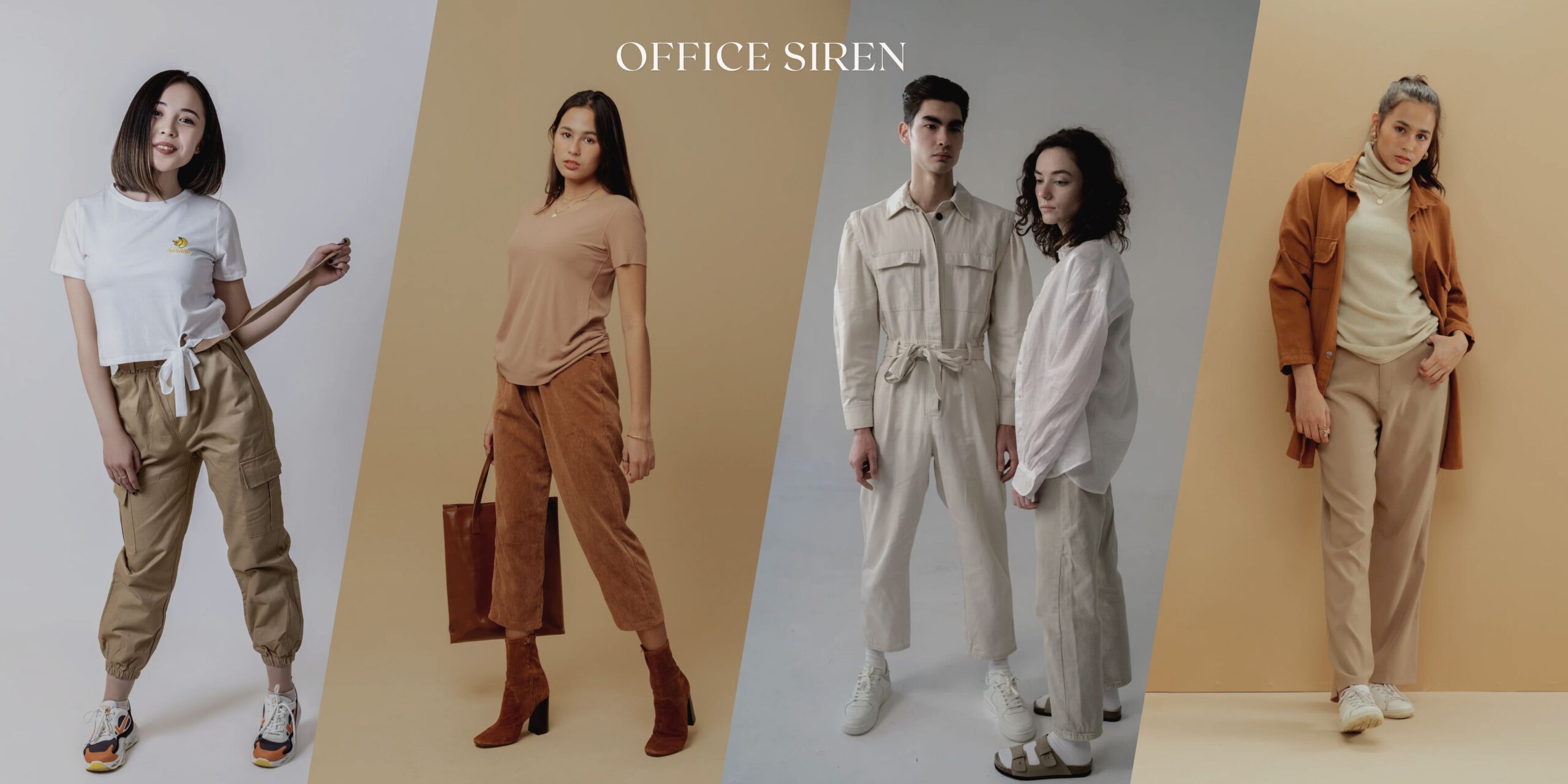Table of Contents
ToggleIntroduction
The Office Siren trend, more popularly known as corpcore has gained momentum as an influential fashion trend, mixing professional attire with elements of hyperfemininity. The aesthetic, which features power suits and body hugging skirts as part of corporate wear attire, speaks volumes about patriarchy and capitalism issues; fashion often mirrors these social structures; therefore examining Office Siren is worth doing from multiple lenses: gender expectations in workplace culture as well as its commoditization of femininity are worthwhile considerations when studying it through its rise through different lenses.
The Evolution of the Girlhood Trend
2024 saw the birth of girlhood: an aesthetic that encompassed youthful innocence with hyper feminism. Designers such as Sandy Liang pioneered this trend through designs with delicate rosettes, babydoll dresses and pastel hues reminiscent of girlhood’s return. Feminine tropes such as bows, ruffles and floral patterns quickly became part of this nostalgic return; its popularity would later pave the way to something far more sexualized: Office Siren.
From Girlhood to Corporate Fetish
Fashion changes as society does; thus girlhood trends gave way to corporate aesthetics with seductive touches – the Office Siren or “corporate fetish” trend became an expression of feminine power within professional spaces, where soft feminine elements met sharp structured suits to blur traditional femininity with corporate professionalism and create an aesthetic which capitalized on workplace fetishization by using fashion both to empower workers while at the same time object ifying them.
Fashion as a Socioeconomic Reflection
Fashion as a cultural artifact often reflects socio economic realities, especially regarding gender roles. Within patriarchal systems, female roles are frequently defined and reinforced through appearance. The corporate fetish trend with its mix of power dressing and hypersexualization speaks to how capitalism and patriarchy intertwine to dictate women’s presentation in the workplace and raises questions of autonomy women have when expressing themselves within social expectations.
Celebrity Influence on the Office Siren Trend
The Office Siren trend first gained widespread notice through celebrity influence; celebrities like Kim Kardashian and Bella Hadid embraced it by sporting bold corporate looks at high-profile events like Dior’s Fall 2024 fashion show. Social media platforms, particularly TikTok, played an instrumental role in spreading its aesthetic by providing platforms where users shared content that romanticized corporate lifestyles which was later picked up on by younger generations.
Hypersexualization in the Workplace: Empowerment or Exploitation?
Hypersexualizing workplace fashion has spurred debate as to whether the Office Siren trend represents empowerment or exploitation of women in the workplace. On one hand, it reclaims femininity and sensuality that have historically been male-dominated environments while at the same time reinforcing objectification of women through encouraging an oversexualized version of professionalism – this trend raises serious concerns regarding its effects on perceptions of female employees in the workplace and whether this trend represents empowerment or exploitation of them.
The Impact of TikTok on Fashion Trends
TikTok has become an invaluable tool in spreading fashion trends, particularly Office Siren-inspired trends like sleek office wear combined with glamorous lifestyles – especially among Gen Zers. Viral videos showcasing this trend further cemented its widespread acceptance. This phenomenon represents a greater cultural fascination with “girlboss” culture as an aestheticization of career ambition.
The Corporate Fetish Coined
Emily Sundberg popularized the term “corporate fetish,” coining it to describe pop culture’s increasing fascination with office attire and corporate aesthetics. What once may have seemed boring or utilitarian has now become a symbol of power and allure; found everywhere from films, television shows, fashion media – taping into our nostalgic longings for professional success that adheres to capitalist ideals.
Fashion, Nostalgia, and Capitalism
The corporate aesthetic, like many fashion trends, is grounded in nostalgia. The elegant lines of tailored suits and structured blouses harken back to earlier decades when corporate power was more explicitly male dominated; its recent revival can be interpreted both as an indication of capitalism’s lasting power as well as in response to women becoming more prevalent within professional spaces; media like The Devil Wears Prada has further cemented its status as desirable style tied to success within capitalism’s framework.
Patriarchal Undertones in Fashion
Fashion trends often reinforce traditional gender roles and expectations through fashion trends, and Office Siren is no different in this respect. While seemingly appealing to modern femininity, its essentialism plays into gender essentialism by mixing professional power with hypersexualized femininity. Cultural phenomena like “girl math” or “girl dinner,” seemingly small gestures contribute to these patriarchal frameworks which show just how deeply embedded gender stereotypes have become within pop culture and fashion.
The Role of Media in Shaping Fashion Trends
Media, particularly fashion brands and advertising campaigns, play an essential part in shaping trends like Office Sirenism. Kim Kardashian’s Skims campaign featuring shapewear combined with professional attire serves as a prime example of the media’s ability to capitalize on cultural shifts; corporate fashion ads typically boasting highly stylized hyper feminine imagery further promote this narrative that professional success and appearance are intrinsically tied.
Is the Office Siren Trend Sustainable?
Like other fast fashion trends, Office Siren aesthetic raises serious sustainability concerns. As fashion cycles speed up and demand increases for trendy corporate wear contributes to growing waste within the fashion industry; such fleeting trends as Office Siren can quickly fade from favor resulting in additional environmental costs from fast fashion consumption.
Psychological Impacts of Fashion Trends
Fashion trends, particularly those related to Office Siren trends, may have significant psychological ramifications on women, including psychologically. Fashion serves as an expression tool that may influence how women view themselves and perceive their value within professional environments; fashion also impacts mental health and self-esteem when tied into expectations of beauty and professionalism in society.
The Male Gaze and the Corporate Look
The Office Siren trend evokes the concept of the male gaze, in which women’s appearances are tailored specifically for male expectations. By mixing professionalism with sensuality, this trend risks reinforcing an objectification narrative about women. Feminist analysis reveals fashion’s complex role both as an empowerment tool and submission mechanism within patriarchal structures.
A Future Without Patriarchal Fashion
As discussions about inclusivity and diversity expand in fashion, there’s hope of shifting away from patriarchal norms in clothing trends. Gender neutral and size inclusive fashion mark a shift away from gender expectations that limit expressions of femininity while challenging patriarchal underpinnings like Office Siren fashion trends.
Conclusion: Fashion as a Form of Expression and Resistance
The Office Siren trend illustrates fashion’s dual role of self-expression and social reinforcement. While fashion may empower, its power may also serve to perpetuate patriarchal narratives in professional settings. At its heart though, fashion remains an invaluable means of resistance that allows women to rewrite socially constructed narratives imposed upon them; be that by accepting or rejecting trends like Office Siren – fashion remains an invaluable platform for negotiating identity, power and autonomy in our increasingly unequal societies.







